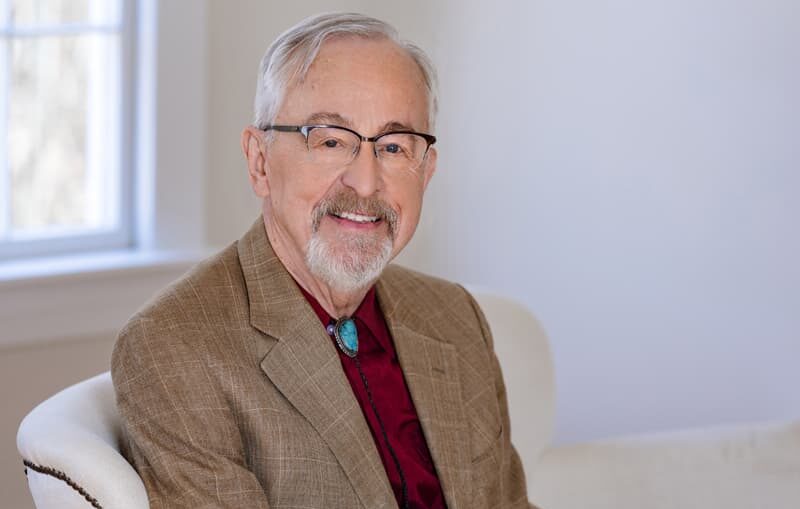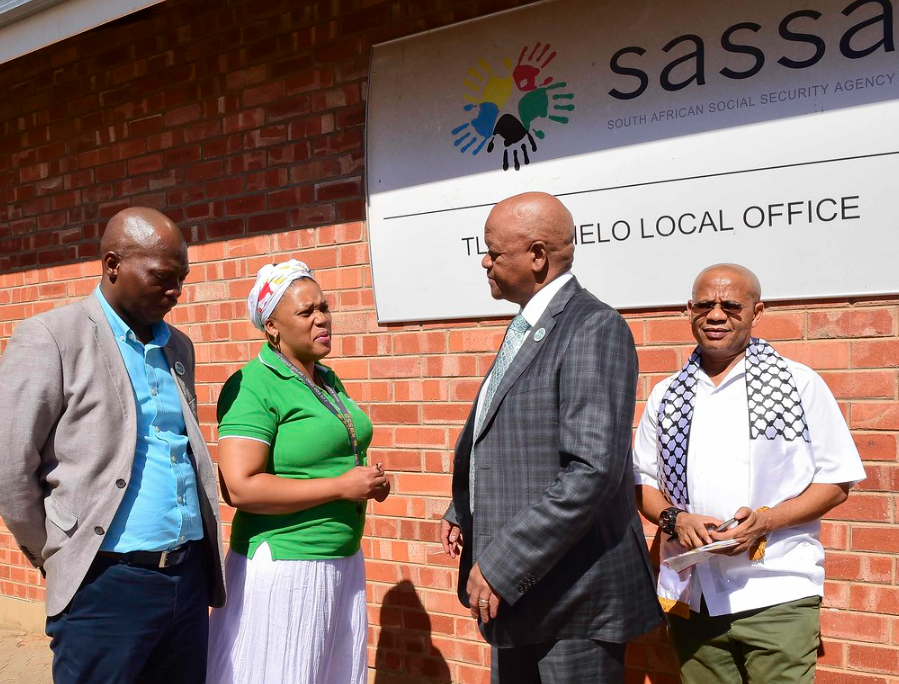Meet Richard C. Larson, the “Dr. Queue” whose groundbreaking work has quietly revolutionized everything from emergency response systems to educational paradigms
In the basement of a Needham, Massachusetts home in the early 1960s, a teenager blasted Elvis Presley and Little Richard at volumes that would have shattered his neighbors’ peace—if not for the soundproof room his engineer father had lovingly constructed. That teenager, Richard C. Larson, had no idea that his passion for physics and his father’s electrical engineering gifts would one day converge to create some of the most impactful innovations in operations research and education.
“I became an ‘MIT Lifer‘: Bachelors, Master and Ph.D. degree all from MIT,” reflects Professor Larson, now the MIT Mitsui Professor at the Institute for Data, Systems and Society. “I did not know it at the time, but that acceptance letter changed my life forever.”
“From Rock-N-Roll Rebel to Research Revolutionary”
Today, at 82, Larson stands as one of America’s most influential yet understated educational innovators. His journey from an uncertain freshman who thought his MIT acceptance was a clerical error to becoming a member of the National Academy of Engineering reads like an academic fairy tale—except the impact is undeniably real and measured in lives saved and minds transformed.
The story begins with that pivotal moment in his family’s backyard, reading his MIT acceptance letter with characteristic self-doubt. “I told my mother that this was a mistake and I’ll probably receive the correction letter in a day or so!” he recalls with a chuckle. “I think I suffered from the Groucho Marx syndrome: ‘I’d never respect a club that would have me as a member!’”
But MIT was no mistake. Larson’s perfect score on the SAT Advanced Physics Test had caught the attention of admissions officers, and his subsequent journey would prove their instincts correct beyond their wildest expectations.
“Where Physics Meets Public Service”
What sets Larson apart in the academic world is his unique ability to bridge the gap between theoretical brilliance and practical application. His chosen field, Operations Research, is what he calls “the World’s most important invisible profession.” The definition is elegantly simple: “It is Research on Operations, all sorts of operations, from traffic lights at intersections, to running the world’s largest airlines, to managing queues in 911-Emergency-call systems.”
“And, Surprise: It is PHYSICS!” Larson emphasizes. “It depicts or models the physics of the world in which we live. I was drawn to Operations Research since I did not wish to become a physicist but I wanted to keep physics front and center in my life.”
This fusion of scientific rigor with real-world problem-solving has characterized Larson’s entire career. When a 23-year-old graduate student carrying an armload of books about criminal identification caught the attention of his advisor, Professor Alvin W. Drake, it led to an unexpected trajectory that would define his professional life. Drake’s curiosity about Larson’s interest in crime-fighting literature resulted in a 12-credit graduate course that ultimately positioned the young researcher as the youngest member of the President’s National Crime Commission’s Science and Technology Task Force.
The Life-Saving Innovation
Among Larson’s numerous achievements, one project stands out for its potential human impact: his revolutionary work on New York City’s 911 emergency call system. In the early days of centralized emergency response, telephone operators struggled with inefficient scheduling that created dangerous delays in emergency response times.
“My work on re-scheduling telephone operators on their then-new 911-Emergency-Call System is something I’m most proud of,” Larson states. “I don’t know for sure, but the call-delay reductions we found and implemented via data analysis and applications of queueing theory might have saved lives.”
This project exemplifies Larson’s philosophy that effective operations research requires what he calls “Boots-on-the-Ground” knowledge. “Postulated theoretical models from one’s office will not do the job! My boots require constant cleaning!” he jokes, referring to his commitment to understanding real-world operations firsthand.
“The Academic Entrepreneur Who Built Solutions”
Larson’s impact extended far beyond the ivory tower through his consulting company, which evolved from a nonprofit called Public Systems Evaluation, Inc. into a thriving for-profit enterprise known as ENFORTH Corporation. At its peak, the company employed over 30 full-time professionals, primarily focused on improving public sector operations in New York City.
This entrepreneurial venture reflected Larson’s belief that academic research should serve society directly. His team worked with city system managers to implement practical solutions that improved everything from police patrol routing to emergency medical services deployment. The Hypercube Queueing Model he developed and coded specifically for urban police departments and emergency medical services has been cited over 900 times in academic literature, testament to its lasting influence.
Educational Philosophy: Beyond Memorization
As education grapples with the challenges of the digital age, Larson’s insights prove remarkably prescient. His educational philosophy emphasizes the crucial distinction between learning and memorization—a perspective shaped by his own student experiences.
“I simply loved physics. Hated biology!” he admits candidly. “One mastered physics by knowing deeply just a few basic principles. Biology: I viewed that as excruciating memorization.” This early recognition of different learning approaches has informed his teaching methodology throughout his career.
His advice to educators reflects this understanding: “Get them to think critically. Show them the differences between true learning and rote memorization, both able to provide good quiz grades. But memorized content is often forgotten in days. True learning can last for a lifetime.”
“AI: The Double-Edged Sword of Modern Education”
When discussing current educational trends, Larson focuses particularly on artificial intelligence’s growing influence. His perspective is characteristically balanced and pragmatic: “AI is both a blessing and a curse. A blessing since it allows humans to expand significantly what we can do. A curse since AI can be hi-jacked to falsely represent the work of humans.”
This nuanced view reflects his broader educational philosophy that emphasizes process over product, understanding over performance. He advocates for preparing students not just for current challenges but for a lifetime of learning and adaptation.
The BLOSSOMS Legacy
Perhaps no single initiative better captures Larson’s commitment to accessible, innovative education than MIT BLOSSOMS (Blended Learning Open Source Science Or Math Studies). This freely available collection of learning lessons, now distributed worldwide via YouTube, represents his dedication to democratizing high-quality education.
The BLOSSOMS project embodies Larson’s belief that transformative education should be available to everyone, regardless of geographic or economic constraints. These lessons blend theoretical concepts with practical applications, reflecting his signature integration of academic rigor with real-world relevance.
“From MIT Halls to Global Impact”
Larson’s career trajectory through five different MIT departments—from Electrical Engineering to his current home in the Institute for Data, Systems and Society—illustrates the interdisciplinary nature of modern problem-solving. His role as Co-Director of the MIT Operations Research Center positioned him to influence generations of researchers who would carry his integrated approach into diverse fields.
The recognition of his contributions has been substantial and varied. The Frederick W. Lanchester Prize for his book “Urban Police Patrol Analysis,” membership in the National Academy of Engineering, the INFORMS President’s Award, and the Kimball Medal represent just a portion of his accolades. Perhaps most endearingly, his nickname “Dr. Queue” and his brief stint as the “Hippie Professor” during a California sabbatical reveal the human dimension of this accomplished academic.
Personal Integration: Life as a Unified Vision
Larson’s approach to balancing professional and personal life offers insights for contemporary leaders struggling with work-life integration. Rather than viewing these spheres as competing priorities, he describes them as “integrated mutually synergistic units. Each supports the other, and each grows as a result.”
This philosophy was shared and supported by his late wife, Mary Elizabeth Murray (“Liz”), who became his intellectual partner in many endeavors. Their collaborative approach included her delivering lectures on their shared research to audiences in Saudi Arabia, demonstrating the global reach of their integrated vision.
The loss of Liz two years ago adds poignancy to Larson’s current focus on legacy and continuation. His recent book, “MODEL THINKING For Everyday Life, How to make smarter decisions,” represents his effort to share the analytical frameworks that have guided his successful career with a broader audience through radio and television interviews.
Mentorship and Inspiration
Larson’s success story is deeply rooted in mentorship, particularly from two influential “Als”—Professor Alvin W. Drake at MIT and Dr. Alfred Blumstein of the President’s Crime Commission. These relationships shaped his understanding that transformative education requires risk-taking and support for exploration of uncharted territories.
“Follow your intellectual passions as far as they will take you!” Larson advises young educators. “Don’t worry that you may find yourself walking on previously unexplored ground. That’s exciting, as you can potentially become transformative to the profession.”
This advice encapsulates the spirit that has driven his own career: the willingness to venture into unknown territories, combine disparate disciplines, and maintain faith in the power of rigorous analysis to solve real-world problems.
The Continuing Mission
As Larson enters his retirement years, his mission remains focused on education and influence. His commitment to “getting The Word out” about model-focused thinking represents a natural evolution of his lifelong dedication to making complex analytical tools accessible and useful to broader audiences.
His service on the Board of Notre Dame Cristo Rey High School demonstrates his continued commitment to educational equity and excellence. The school’s mission to provide world-class education to underprivileged students aligns perfectly with his own values of democratizing high-quality learning opportunities.
The achievements of the school’s students—excelling academically and achieving high standardized test scores that open doors to colleges and universities—validate Larson’s belief in the transformative power of education when properly structured and supported.
“The Quiet Revolutionary Whose Impact Echoes Through Generations”
Richard C. Larson’s story represents more than individual achievement; it embodies a vision of education and research that seamlessly integrates theoretical excellence with practical impact. His career demonstrates that the most profound innovations often emerge from the intersection of disciplines, the willingness to challenge conventional boundaries, and the commitment to serve society through rigorous analysis and thoughtful application.
From that soundproof basement where a teenager played rock and roll to the MIT halls where a professor shaped the future of operations research and education, Larson’s journey illustrates the unpredictable pathways that lead to transformative impact. His legacy lies not just in the lives potentially saved by improved emergency response systems or the students inspired by innovative teaching methods, but in the demonstration that academic excellence and social service can be perfectly aligned.
As America’s educational landscape continues to evolve, Richard C. Larson’s example provides a template for the kind of leadership needed: intellectually rigorous, practically grounded, ethically motivated, and ultimately focused on expanding human potential through the power of learning and analytical thinking.
In an era of increasing specialization and compartmentalization, “Dr. Queue” reminds us that the most significant challenges require integrated thinking, collaborative approaches, and the courage to venture into unexplored territories. His advice to follow intellectual passions wherever they lead serves as both personal guidance and professional imperative for the educators and innovators who will shape tomorrow’s learning environments.
The teenager who once worried that his MIT acceptance was a mistake has spent a lifetime proving that sometimes the most transformative journeys begin with the humility to question our own assumptions and the courage to pursue our deepest intellectual curiosities wherever they may lead.
Professor Richard C. Larson continues his work in educational innovation and model-based thinking from Cambridge, Massachusetts, where his influence on operations research, emergency systems, and educational methodology continues to resonate globally.







